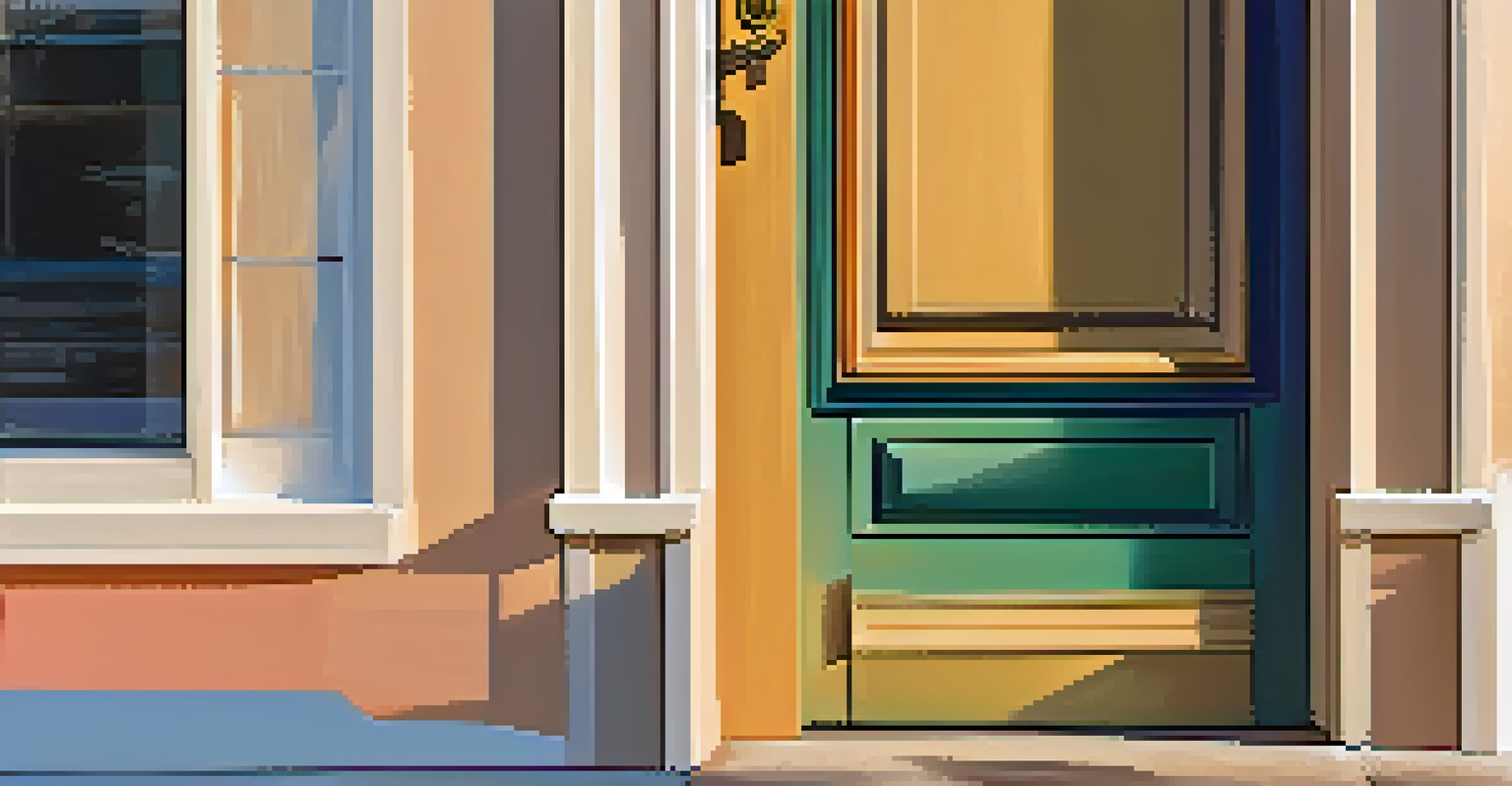Sealing Drafts: Key Steps to Improve Home Energy Efficiency

Understanding the Impact of Drafts on Energy Efficiency
Drafts are those sneaky little air leaks that can significantly impact your home's energy efficiency. They can cause your heating and cooling systems to work overtime, leading to higher energy bills. Imagine trying to fill a bathtub while the drain is wide open; that's what drafts do to your home’s energy efforts.
The greatest energy efficiency is achieved when we balance comfort and conservation.
By allowing conditioned air to escape, drafts make your home feel less comfortable and can even lead to unwanted temperature fluctuations. This means you could be paying more to keep your home cozy in winter or cool in summer. Identifying and sealing these drafts is not just about comfort; it's about smart energy use.
In this article, we'll explore practical steps to seal those drafts effectively. By taking these measures, you can create a more energy-efficient home that feels just right, regardless of the season.
Identifying Common Draft Locations in Your Home
Before you can seal those pesky drafts, you need to know where to look. Common draft sources include windows, doors, electrical outlets, and even attic hatches. Think of your home as a ship; if there are leaks below deck, you’re bound to take on water.

A simple way to identify drafts is to conduct a visual inspection during the day. Look for gaps or cracks around windows and doors, and check for worn-out weather stripping. You can also use a candle or incense stick; if the flame flickers or smoke drifts, you’ve found a draft!
Drafts Hurt Energy Efficiency
Drafts cause heating and cooling systems to work harder, leading to increased energy bills.
Once you’ve identified these areas, you can make a plan for sealing them up. This proactive approach not only enhances your home's comfort but also helps you save money in the long run.
Tools and Materials Needed for Sealing Drafts
Having the right tools and materials on hand makes sealing drafts a breeze. Key items include weather stripping, caulk, door sweeps, and foam sealant. Think of these items as your trusty toolkit for a home energy makeover.
Energy efficiency is not just about saving money; it's about saving the planet.
Weather stripping is perfect for sealing gaps around doors and windows, while caulk works wonders for cracks in walls and around fixtures. Door sweeps can be added to the bottom of doors to block unwanted airflow, creating a snug fit that keeps the cold out.
By gathering these materials in advance, you're setting yourself up for success. With a well-equipped toolkit, you’ll be ready to tackle those drafts head-on.
Sealing Windows: A Step-by-Step Guide
Windows are often the biggest culprits when it comes to drafts. To seal them effectively, start by removing old weather stripping and cleaning the area thoroughly. A clean surface ensures that new materials adhere properly, just like prepping a canvas before painting.
Next, apply fresh weather stripping around the window frame. There are various types available, so choose one that best suits your window style. After that, fill any gaps with caulk, smoothing it out with your finger for a neat finish.
Identify Common Draft Sources
Common draft locations include windows, doors, and electrical outlets, which can be easily inspected and sealed.
Finally, consider adding window film for an extra layer of insulation. By sealing your windows, you’re not only improving energy efficiency but also enhancing your home’s aesthetic appeal.
Sealing Doors: Techniques for Maximum Efficiency
Just like windows, doors can let in unwanted drafts if they aren't properly sealed. Start by inspecting the weather stripping around your doors. If it’s worn or damaged, replace it to ensure a tight seal. Think of it as giving your door a fresh new coat to keep the outside air at bay.
Another effective technique is to install a door sweep at the bottom of the door. This helps block drafts coming from underneath, especially during the colder months. It’s a simple addition that can make a big difference in your comfort level.
Don’t forget to check the threshold as well. Sometimes, a slight adjustment is all it takes to create a snug fit. With these steps, your doors will be ready to stand strong against the elements.
Addressing Drafts from Electrical Outlets
Did you know that electrical outlets can also be a source of drafts? It's true! These tiny gaps can let cold air seep in, especially on exterior walls. To tackle this issue, start by turning off the power to the outlets you want to seal for safety.
Once the power is off, remove the outlet cover and place foam gaskets behind it. These gaskets act as a barrier, reducing airflow without compromising functionality. It’s a small change that can lead to noticeable energy savings.
Sealing Drafts Saves Money
By sealing drafts, you can reduce energy costs while improving your home's comfort and sustainability.
After replacing the cover, remember to turn the power back on. By addressing outlet drafts, you’re making your home more energy-efficient, one small step at a time.
Sealing Attic and Basement Drafts for Overall Efficiency
Attics and basements are often overlooked when it comes to sealing drafts, but they play a crucial role in your home's energy efficiency. Start by inspecting the attic for gaps around vents, pipes, and electrical wiring. These areas can be significant sources of air leaks.
Use caulk or expanding foam sealant to fill in these gaps, creating a barrier between your home and the outside elements. In basements, check for cracks in walls and around windows, sealing them to prevent cold air from seeping in.

By properly sealing these areas, you can significantly reduce your home's overall energy loss. It’s like adding insulation to your ship’s hull; every little bit counts when it comes to keeping your home comfortable.
The Long-Term Benefits of Sealing Drafts
Once you've sealed those drafts, you might be wondering what the long-term benefits are. First and foremost, you’ll notice a reduction in your energy bills, as your heating and cooling systems won’t have to work as hard. It's like finding money you didn’t know you had, just by making your home more efficient.
Additionally, a well-sealed home improves comfort levels by maintaining a steady indoor temperature. You’ll feel more relaxed knowing that your space is cozy without the constant battle against drafts.
Lastly, sealing drafts contributes to a more sustainable lifestyle by reducing energy consumption. By taking these steps, you’re not only benefiting your household but also doing your part for the environment. It’s a win-win situation!